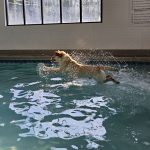The Importance and Safety of Microchipping Your Pet
Ensuring the safety and well-being of our pets is a top priority for any animal owner. One of the most effective ways to safeguard your furry friend is through microchipping. At Independence Veterinary Clinic, we offer comprehensive microchipping services and serve as a microchip checkpoint for lost animals. Let’s explore the importance of microchipping your pet and the steps to take if a pet is found.
What is Microchipping?
A microchip is a small, rice-sized device that is implanted under your pet’s skin, usually between the shoulder blades. This chip carries a unique identification number that can be read by a scanner. Unlike a GPS tracker, a microchip does not provide real-time location data. Instead, it offers a permanent ID that can help reunite lost pets with their owners.
Why Microchipping Matters
1. Permanent Identification: Unlike collars and tags, which can break or be removed, a microchip provides a permanent form of identification that lasts a lifetime.
2. Increased Chances of Reunification: According to studies, microchipped pets are significantly more likely to be reunited with their owners compared to those without. A microchip provides a reliable way for shelters and veterinary clinics to identify lost pets and contact their owners.
3. Proof of Ownership: In disputes over pet ownership, a microchip serves as an indisputable form of identification, proving who the rightful owner is.
Does your pet need a microchip or do you have additional questions? Give us a call at (704) 841-1313 to schedule today!
What to Do if You Find a Dog or Cat in Charlotte, NC
Finding a lost dog or cat can be a heart-wrenching experience, both for you and the animal. If you find a stray animal in Charlotte, there are several steps you can take to ensure the pet is safely returned to its owner. One crucial step is taking the animal to a microchip checkpoint, such as Independence Veterinary Clinic, where we can help identify the owner through the microchip. Here’s a step-by-step guide on what to do if you find a dog or cat in Charlotte:
1. Ensure the Pet’s Safety. First and foremost, ensure that the pet is safe and out of harm’s way. If the dog or cat is in a dangerous location, carefully coax it to a safe area. Use gentle, calming language and avoid sudden movements to prevent scaring the animal.
2. Check for Identification. Examine the pet for any collars or tags that might have identification information. If they do have a tag, it may have the owner’s contact details, making it easier to reunite them.
3. Contain the Pet. If the pet is friendly and approachable, try to contain it in a secure area, such as your yard or a nearby fenced space. This will prevent them from wandering further and potentially getting into danger.
4. Contact Local Authorities. Notify local animal control and nearby shelters about the found pet. They can provide guidance and check their databases for any missing pets that match the provided description.
5. Take the Pet to a Microchip Checkpoint. Bringing the dog or cat to a microchip checkpoint is a crucial step in reuniting it with its owner. Independence Veterinary Clinic offers microchip scanning services to identify lost pets. Here’s how to proceed:
- Visit Independence Veterinary Clinic: Bring the found pet to our clinic during business hours. No appointment is necessary for microchip scanning services.
- Microchip Scanning: Our staff will scan the furry friend for a microchip. This painless procedure involves using a handheld scanner to detect a microchip under the patient’s skin. If a microchip is found, we will contact the registered owner using the information linked to the microchip ID.
6. Utilize Social Media and Online Platforms. While waiting for microchip results or if no microchip is found, spread the word about the found friend on social media and local online platforms. Post clear photos and descriptions on:·
- Facebook groups: Look for local “lost and found pets” groups in Charlotte.
- Nextdoor: Post in your neighborhood’s Nextdoor group to alert nearby residents.
- Lost pet websites: Use websites like PawBoost and Lost My Doggie to create alerts and check for matching lost pet reports.
7. Create Flyers. Print flyers with the pet’s photo and your contact information. Distribute them in your neighborhood, local businesses, and community centers. Flyers can be an effective way to reach people who may not be active online.
8. Provide Temporary Care. While waiting for the owner to come forward, provide the animal with basic care, including food, water, and shelter. If you are unable to care for the pet, contact local shelters or rescue groups for assistance.
9. Stay Informed and Follow Up. Stay in touch with local shelters and animal control to check if the owner has reported the pet missing. Follow up on any leads or information you receive from your online posts and flyers.
Finding a lost dog or cat can be a distressing situation, but by following these steps, you can greatly increase the chances of reuniting the pet with its owner. Remember, Independence Veterinary Clinic is here to assist you with microchip scanning and support in reuniting lost pets with their families. Your efforts can make a significant difference in a lost dog or cat’s life and bring relief to its worried owner.
Citation:
Chat GPT











